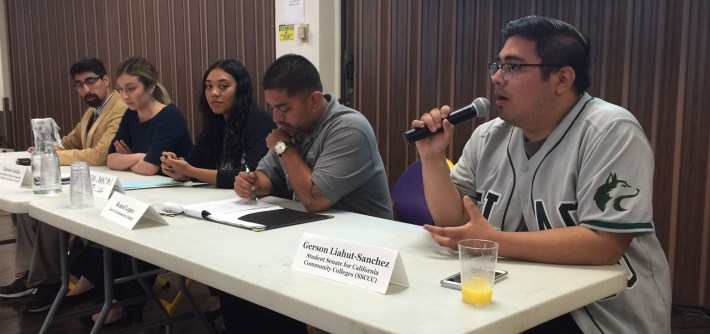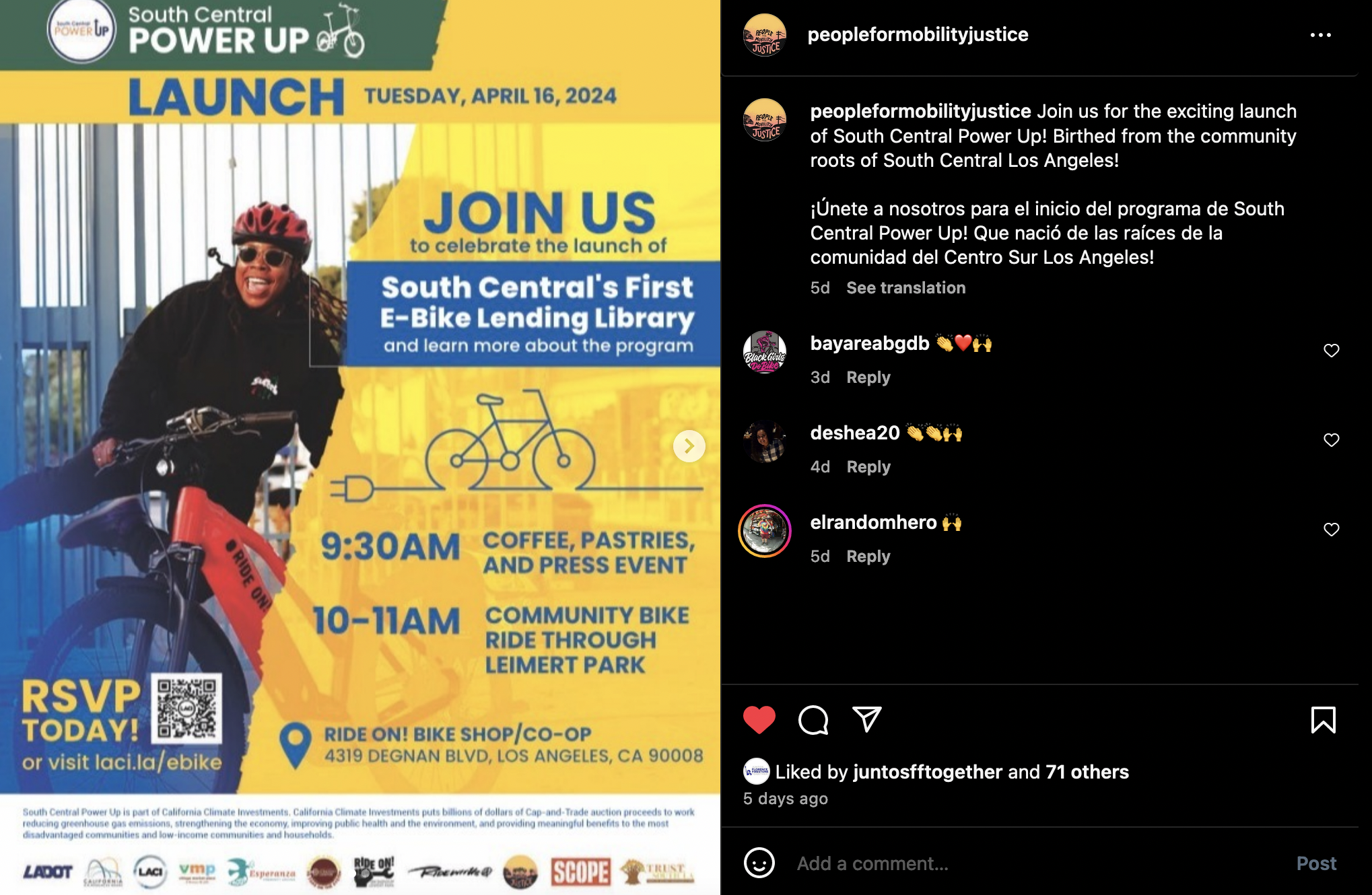Metro Deputy CEO Wiggins Previews Proposed Student Pass Program Upgrade
5:16 PM PDT on May 13, 2016

At this morning's Student Transit Pass Advocacy Summit at L.A. Trade Tech College, Metro Deputy CEO Stephanie Wiggins announced changes that Metro plans to make to its student transit pass programs. Later this month, the proposed changes will go to the Metro board for approval.

At the summit, students representing colleges from around the region including L.A. Mission College, East L.A. Community College and Long Beach City College spoke of the stress of working to build their futures, while balancing work and school.
Currently, transit passes are only available to full-time students, so students face pressure to enroll in more units to qualify for passes. Students spoke of the frustration of buses that arrive only once an hour, on schedules not aligned to class schedules. Lorena Aguilar, ASO Vice President for L.A. Mission College criticized Metro bus service to Mission College, which runs hourly in the evening. The hourly bus departs campus at 9:58 p.m. making it unusable for students attending evening classes which conclude at 10 p.m.
Responding to student concerns, Metro's Stephanie Wiggins outlined proposed changes to the agency's current student transit pass programs. Wiggins describes Metro's current "broken" student pass system as annually costing the agency $8 million to serve 14,000 student. While Metro is looking to grow the funding available for the program - through Measure R2 and state legislation outlined below - initial changes will focus on making passes more widely available, in hopes of growing the pool of students who ride Metro.
The Metro student pass proposal includes two modifications to Metro processes to make it easier for students to get discounted passes:
- On-Campus Enrollment: Current procedures require students to mail in an application and receive a student TAP by mail (or go to a central off-campus location, typically in downtown L.A.) Under the proposed changes, students will be able to enroll on-campus during registration. Instead of a separate TAP card, students will receive a TAP-enabled sticker that would go on their college ID card. This program is currently being piloted in Long Beach, and would expand to an initial group of colleges willing to administer. Administering the new program will some commitment of resources from the college. Students expressed concerns that these programs may benefit more well off communities, and not reach colleges serving low income communities of color.
- Part-Time Student Eligibility: Currently Metro student passes are only available for students enrolled for 12 credits (full-time). The new program would move away from the full-time requirement, initially, likely August 2016, to 8 credits, then probably to 6 credits.
Move L.A. and student representatives are also pushing for student transit pass funding at the state level. Assemblymember Chris Holden (D-Pasadena) has authored A.B. 2222 which would set aside $50 million annually in state Greenhouse Gas Reduction Funds (GGRF) to pay for student transit passes.
The most successful student transit pass programs, including Santa Monica College's Any Line / Any Time aggregate funding from multiple sources. In SMC's case, this includes the city, the college and Big Blue Bus. Colleges may create student transit fees, like Mount San Antonio College's Class Pass and SMC's passes, or allocate existing student body funds, or may seek outside funding. Often the impetus for these programs is difficult parking situations that would otherwise necessitate building expensive parking structures.
Though Metro's small improvements will likely help broaden access to student passes, additional resources are needed to implement free or very low cost student passes. Additional state and/or Measure R2 funding is likely to help get these programs off the ground, or make existing programs work better.
Stay in touch
Sign up for our free newsletter
More from Streetsblog Los Angeles
Metro Looks to Approve Torrance C Line Extension Alignment
Selecting the relatively low-cost hybrid alternative should help the oft-delayed South Bay C Line extension move a step closer to reality
This Week In Livable Streets
CicLAvia returns to Venice Boulevard, Metro board committees, L.A. City Council Transportation Committee, Metro budget theater, and more




